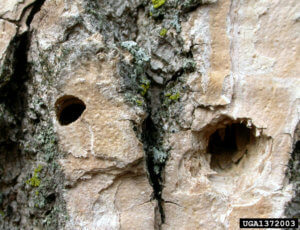The Firewood Comparison Report (officially, Firewood Regulation, Certification, and Recommendation Report) is a professional resource for in-depth information on firewood and forest pest regulations, certification, and recommendations across U.S. states and territories. The team at Don’t Move Firewood has updated the document, and conducted multiple webinars each year, since it’s first publication in early 2022. All documentation and webinars are now found in this report’s new permanent page; https://www.dontmovefirewood.org/firewood-comparison-report/. Please visit that page for all the latest updates and documents.
Month: January 2022
Build on the power of birdwatching!
Did you know that 20% of US residents identify themselves as a birdwatcher, bird lover, or birder? That’s a LOT of binocular wielding citizen scientists! Does that include… YOU?
Here at Don’t Move Firewood, we’d like to invite all the birdwatchers that participate in the Christmas Bird Count, Great Backyard Bird Count, or just everyday birding adventures, to take a few moments to inspect the trees that their birds depend on for signs of forest pests. The easiest thing to do is to look around for holes in trees- and we’ve made a special handout called the Birdwatcher’s Guide to Holes in Trees for just that purpose. Download the handout, read through it, and familiarize yourself with the three basic types of holes in trees- holes made by typical bird foraging, holes made by birds foraging on invasive insects, and holes made by the invasive insects themselves.
BUT WAIT! Are you a forest health professional? Multiply your impact by reaching out to your local Audubon Society (or other birdwatching group) representative to get Holes in Trees handouts to each birder that they know! You can either choose to print out physical copies and provide them, or just email the PDF to various birding listservers. You are responsible for contacting and educating your local bird groups- and remember, they are usually volunteers, so please be respectful of their time and desire to help (or a lack thereof!).
Good luck, and keep an eye out for Holes In Trees!

Photo of emerald ash borer exit hole and woodpecker foraging hole, credit D. Cappaert
This page was initially published in 2014 as Harness the power of Birdwatchers



